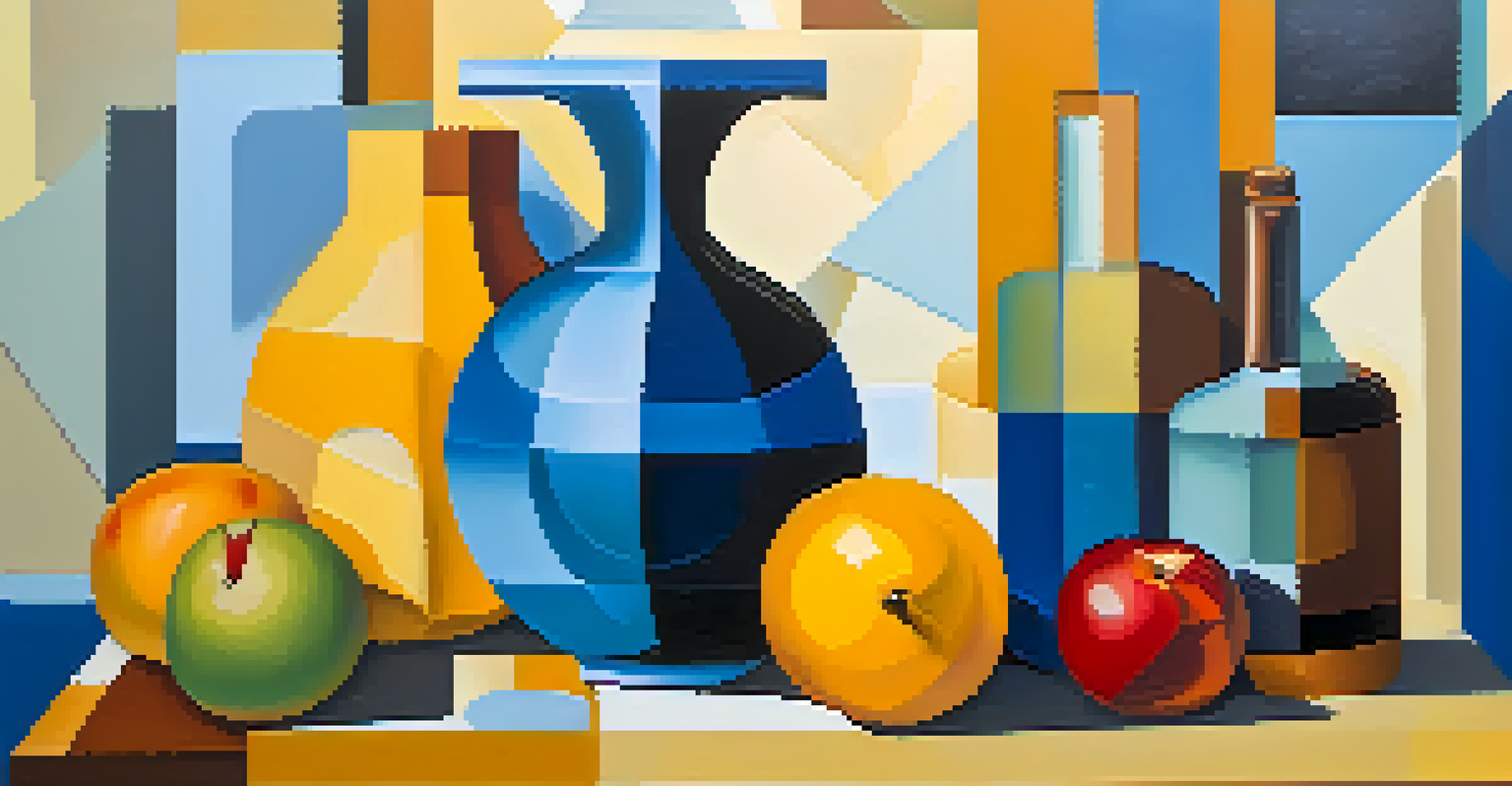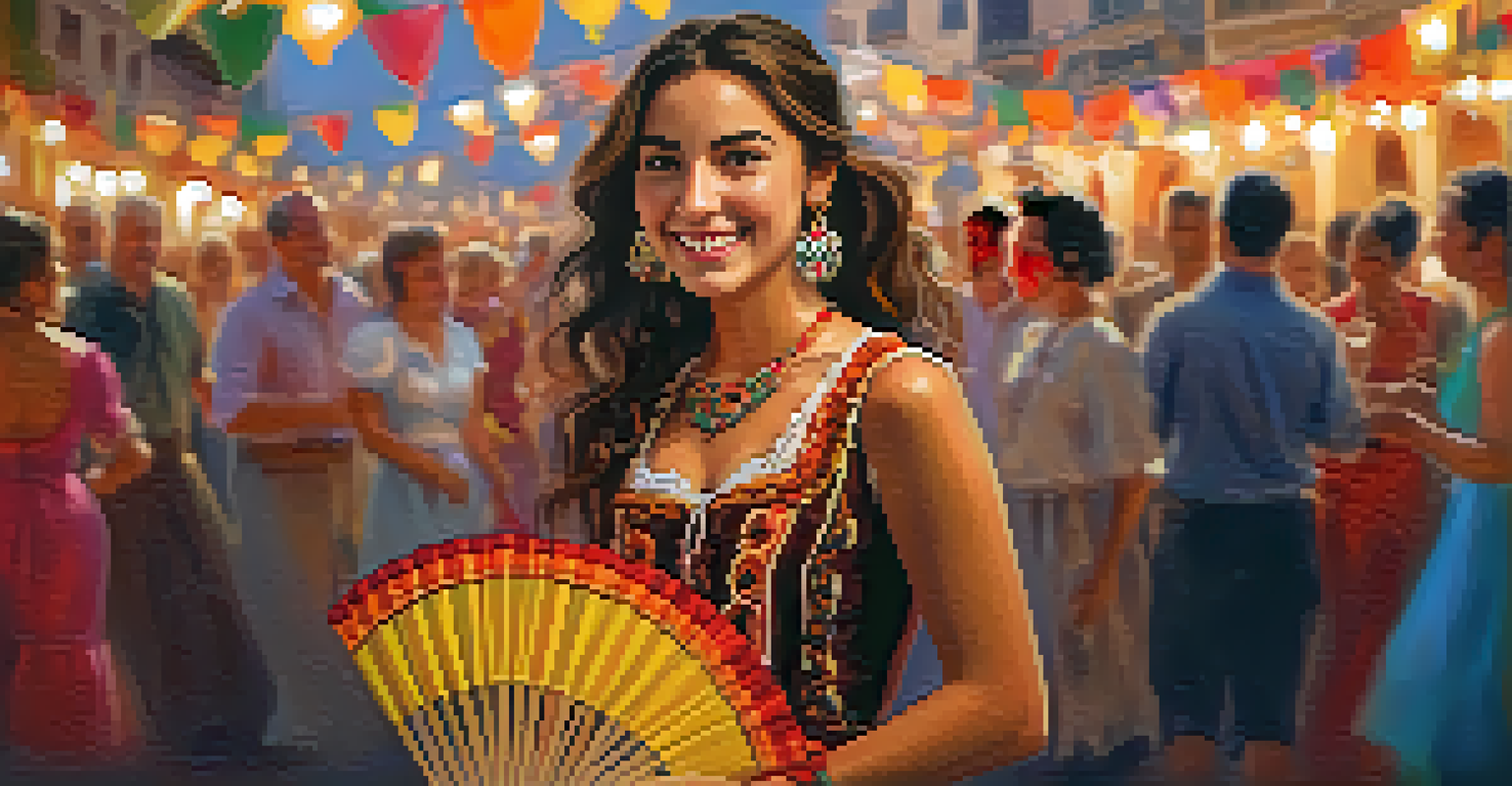Impact of Pablo Picasso: His Role in Evolving Spanish Art

Pablo Picasso: A Brief Introduction to His Life and Work
Pablo Picasso, born in 1881 in Málaga, Spain, is one of the most influential artists of the 20th century. His journey began at a young age, showing prodigious talent in drawing and painting. As he grew, he explored various styles, eventually leading to his role as a co-founder of the Cubist movement—an artistic revolution that changed how we perceive form and space.
Every act of creation is first an act of destruction.
Picasso's artistic evolution mirrored the tumultuous events of his time, including wars and social upheaval. Each period of his life brought forth new techniques and styles, from his early Blue and Rose periods to his later works that defied traditional representation. This constant reinvention not only showcased his versatility but also influenced countless artists across the globe.
Understanding Picasso's life is essential to appreciating his work. His art was not created in a vacuum; it was deeply intertwined with his experiences, emotions, and the cultural landscape of Spain and beyond. This connection is what makes his contributions to art so profound and transformative.
The Evolution of Spanish Art Before Picasso's Era
Before Picasso emerged on the scene, Spanish art was largely characterized by its adherence to realism and traditional techniques. Renowned artists like Diego Velázquez and Francisco Goya set the stage with their masterful portrayals of light, shadow, and human emotion. Their works celebrated the richness of Spanish culture while also reflecting societal issues of their times.

However, as the 19th century progressed, Spain faced significant political and social changes, leading to a period of artistic stagnation. Many artists found themselves grappling with the question of how to express their national identity amidst modernization. This struggle paved the way for a new generation of artists who sought to break free from the constraints of the past.
Picasso's Role in Art Revolution
Pablo Picasso co-founded the Cubist movement, transforming how artists represent reality by allowing multiple perspectives in a single artwork.
It was in this context that Picasso's innovative spirit began to take shape. His desire to challenge conventions and explore new artistic frontiers resonated with the needs of a changing society, setting the stage for a radical shift in Spanish art that would unfold in the early 20th century.
Cubism: Picasso's Breakthrough Movement
Cubism, co-founded by Picasso and Georges Braque, revolutionized the way artists represented reality. Instead of depicting objects from a single viewpoint, they fragmented forms and reassembled them in abstract ways, allowing viewers to see multiple perspectives at once. This radical approach encouraged other artists to experiment with abstraction and challenged the very notion of representation.
Art is a lie that makes us realize truth.
Picasso's seminal work, 'Les Demoiselles d'Avignon,' exemplified this new style. The painting shocked audiences with its distorted figures and bold colors, pushing the boundaries of what art could be. This pivotal moment not only marked the birth of Cubism but also signaled a departure from traditional artistic norms that had dominated for centuries.
The impact of Cubism extended beyond Picasso and Braque. It inspired a plethora of movements in modern art, from Futurism to Surrealism, as artists began to embrace abstraction and multiple viewpoints. This legacy solidified Picasso's role as a key figure in the evolution of Spanish art and its global influence.
Picasso's Political Engagement Through Art
Art for Picasso was not just about aesthetics; it was also a powerful tool for political expression. His works often reflected the tumultuous political landscape of Spain and Europe, particularly during the Spanish Civil War. One of the most notable examples is 'Guernica,' a haunting mural that captures the horrors of war and the suffering of innocent civilians.
'Guernica' stands as a testament to Picasso's ability to convey complex emotions and messages through his art. The stark monochrome palette and distorted figures evoke a sense of despair and chaos, making it a poignant anti-war statement. This painting not only resonated in Spain but also became a symbol of peace and resistance worldwide.
Political Themes in Picasso's Art
His artwork, particularly 'Guernica,' reflects the political turmoil of his time, using art as a powerful medium for social commentary.
Picasso's political engagement extended beyond this single work; his art consistently challenged societal norms and addressed issues of injustice. By embedding his political beliefs into his creations, he inspired artists to use their platforms for activism, thus shaping a legacy that transcended borders and generations.
The Influence of Picasso on Future Generations of Artists
Picasso's groundbreaking techniques and styles have left an indelible mark on art history, influencing countless artists across various movements. From the Abstract Expressionists to the Neo-Expressionists, many have drawn inspiration from his approach to form, color, and composition. His willingness to experiment and break boundaries encouraged artists to explore their own creative voices.
Moreover, Picasso's impact is evident in the way modern artists approach cultural identity. By embracing his Spanish heritage while also engaging with broader international themes, he paved the way for artists to express their multifaceted identities. This idea of blending personal and cultural narratives continues to resonate in contemporary art today.
Ultimately, Picasso's legacy is not confined to his individual works; it lies in the spirit of innovation and exploration that he instilled in the art world. His influence serves as a reminder for artists to challenge conventions and express their truths, ensuring that his impact on Spanish art—and the global art scene—will endure for generations to come.
Picasso's Role in Shaping Modern Spanish Identity
Beyond his artistic techniques, Picasso played a crucial role in shaping modern Spanish identity through his works. His ability to weave elements of Spanish culture, folklore, and history into his art fostered a sense of national pride during a time of political turmoil. By embracing his roots, Picasso invited the world to appreciate the richness of Spanish heritage.
His works often featured themes of love, conflict, and social commentary, reflecting the complexities of Spanish life. This exploration of identity resonated with many artists and citizens alike, prompting a renewed interest in the cultural narratives that define Spain. Picasso's art became a bridge between tradition and modernity, allowing for a broader understanding of Spanish identity.
Legacy of Cultural Identity
Picasso's integration of Spanish culture into his work has profoundly influenced modern Spanish identity and inspired future generations of artists.
As Spain transitioned into the modern age, Picasso's influence encouraged a generation of artists to explore their own cultural stories. This celebration of identity and heritage continues to thrive in contemporary Spanish art, demonstrating that Picasso's impact extends far beyond his lifetime.
The Enduring Legacy of Pablo Picasso in Spanish Art
Today, Picasso's legacy remains a cornerstone of Spanish art, with his works celebrated in museums and exhibitions worldwide. His innovative spirit continues to inspire artists, curators, and art enthusiasts who seek to understand the evolution of modern art. The techniques he pioneered and the themes he explored have become integral to the fabric of artistic expression.
Moreover, Picasso's influence extends into popular culture, with references to his work appearing in literature, film, and graphic design. This cross-disciplinary impact underscores the universal appeal of his art and the relevance of his ideas in contemporary discussions about creativity and identity.

In conclusion, Pablo Picasso's role in evolving Spanish art is undeniable. His contributions not only transformed the artistic landscape but also shaped the cultural identity of Spain, leaving a legacy that will continue to inspire future generations of artists and art lovers alike.